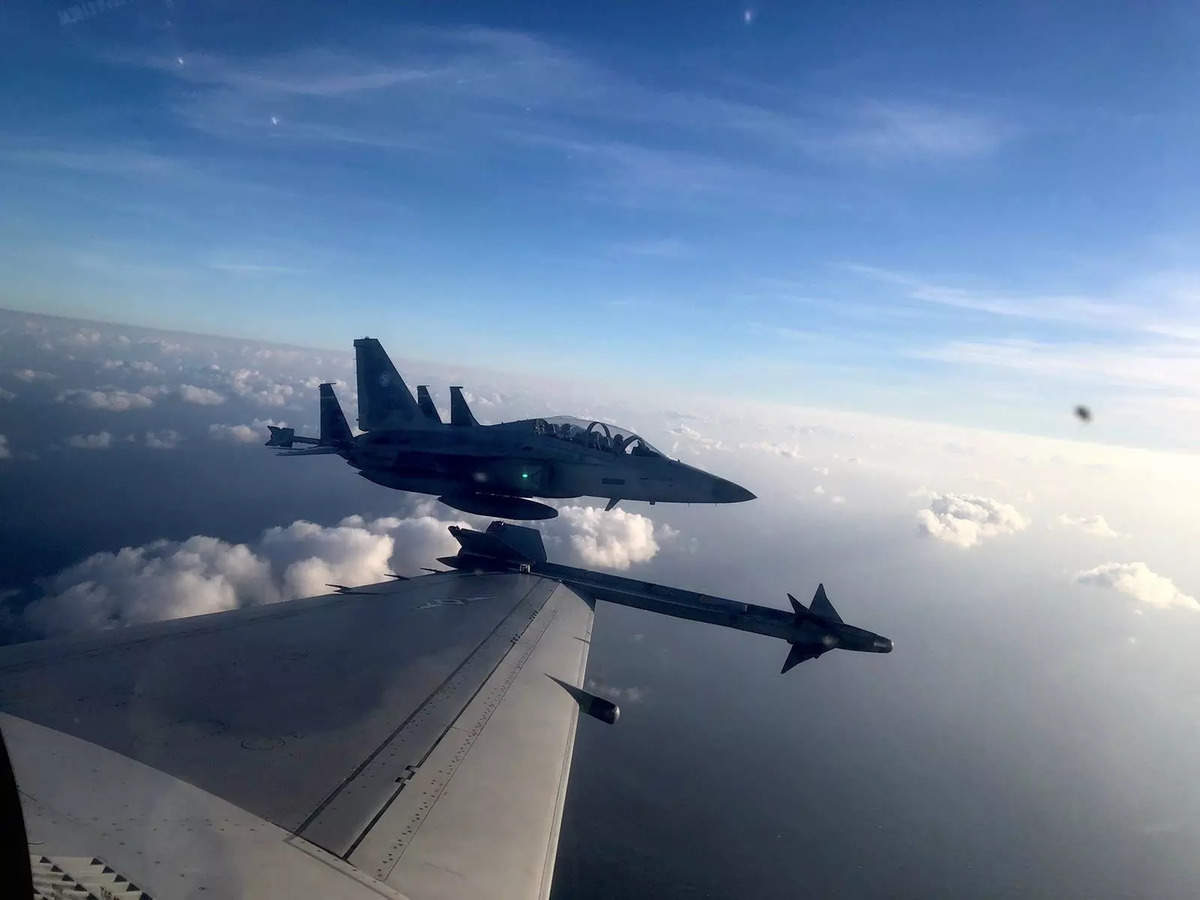Tensions Rise in the South China Sea Amid Aerial Confrontations
A recent incident involving a Chinese navy helicopter and a Philippine patrol plane has heightened tensions in the already disputed South China Sea. The close encounter occurred when the Chinese aircraft came within just 10 feet of the Philippine aircraft, prompting a stern radio warning from the Filipino pilot.
The Encounter
On Tuesday, the Philippine Bureau of Fisheries and Aquatic Resources operated a Cessna Caravan turboprop when it was confronted by a Chinese navy helicopter while patrolling the contested Scarborough Shoal, located off the northwestern coast of the Philippines. The Chinese claimed that the Philippine aircraft had trespassed into what they assert is their airspace.
“You are flying too close, you are very dangerous and endangering the lives of our crew and passengers,”
the Philippine pilot communicated via radio, emphasizing the proximity of the Chinese aircraft. He continued, admonishing the helicopter to maintain a safe distance and referenced aviation safety regulations set forth by the U.S. Federal Aviation Administration (FAA) and the International Civil Aviation Organization (ICAO).
The encounter lasted approximately 30 minutes, during which the Philippine aircraft remained steadfast in its flight path, undeterred by the hovering and maneuvering of the Chinese helicopter.
Philippines Defends Sovereignty
In the wake of the incident, both the Philippine Coast Guard and the Bureau of Fisheries reiterated their dedication to safeguarding the West Philippine Sea—Manila’s term for its exclusive economic zone in the South China Sea.
Meanwhile, Chinese military officials responded by accusing the Philippine aircraft of illegally entering their airspace over what China calls Huangyan Island. A spokesperson stated that the Chinese naval and air forces had “monitored and warned” the Philippine plane, while also accusing Manila of spreading misinformation regarding the encounter.
Growing Inequities in the South China Sea
This altercation is just one of many incidents that illustrate the deepening tensions in the strategically significant South China Sea, an area of contention involving multiple countries, including China, the Philippines, Vietnam, Malaysia, Brunei, and Taiwan.
Conflicts between Chinese and Philippine forces have escalated over the past couple of years, particularly around Scarborough Shoal and the Second Thomas Shoal. The Second Thomas Shoal has been a focal point since 1999, with a grounded Philippine navy vessel serving as a makeshift military outpost, now surrounded by Chinese coast guard and navy ships.
Scarborough Shoal has been under Chinese control since a naval standoff in 2012. Following that incident, the Philippines challenged Beijing’s claims in an international tribunal, which in 2016 resulted in a pivotal ruling: a United Nations-backed arbitration declared that China’s expansive claims over the South China Sea were unlawful under the U.N. Convention on the Law of the Sea (UNCLOS).
Despite being a signatory to UNCLOS, China has rejected this ruling and continues to reinforce its position in the region.
International Responses to China’s Actions
Faced with escalating maritime disputes, Philippine President Ferdinand Marcos Jr. has adopted a proactive approach by engaging the media to spotlight Beijing’s aggressive maneuvers. This “shame campaign” aims to draw international attention and support for the Philippines’ position.
Additionally, Manila has cultivated stronger alliances with Western nations. These include the United States, Japan, Australia, France, Canada, and the European Union, with the objective of enhancing its defense posture against Chinese aggression.
The United States, the Philippines’ longest-standing treaty ally in Asia, has reaffirmed its commitment to Philippine defense. The U.S. government has indicated it would respond if Filipino forces, ships, or aircraft come under attack, particularly in contested regions like the South China Sea.
China’s Stance Against Western Intervention
In contrast, China has expressed discontent over the growing involvement of the U.S. and its allies, asserting that the situation pertains to regional affairs that should not involve outside forces. With both sides entrenching their positions, the potential for future confrontations remains high.
As Southeast Asia navigates these turbulent waters, the South China Sea continues to be a complex flashpoint illustrating the harboring tensions between national sovereignty, international law, and the competing interests of regional and global powers.
The Road Ahead
The incident involving the Chinese navy helicopter and the Philippine patrol plane is indicative of a broader struggle for territorial dominance in the South China Sea. As both nations jockey for position, the situation requires close monitoring given the precarious balance of power and the potential for miscalculation that could lead to a larger confrontation.
The actions of both Beijing and Manila will likely be scrutinized not just regionally, but also globally, as nations express their strategic interests in maintaining stability in this vital maritime corridor. In the weeks and months to come, the diplomatic discourse surrounding this complex issue will be critical in shaping the future of Southeast Asia’s security landscape.
